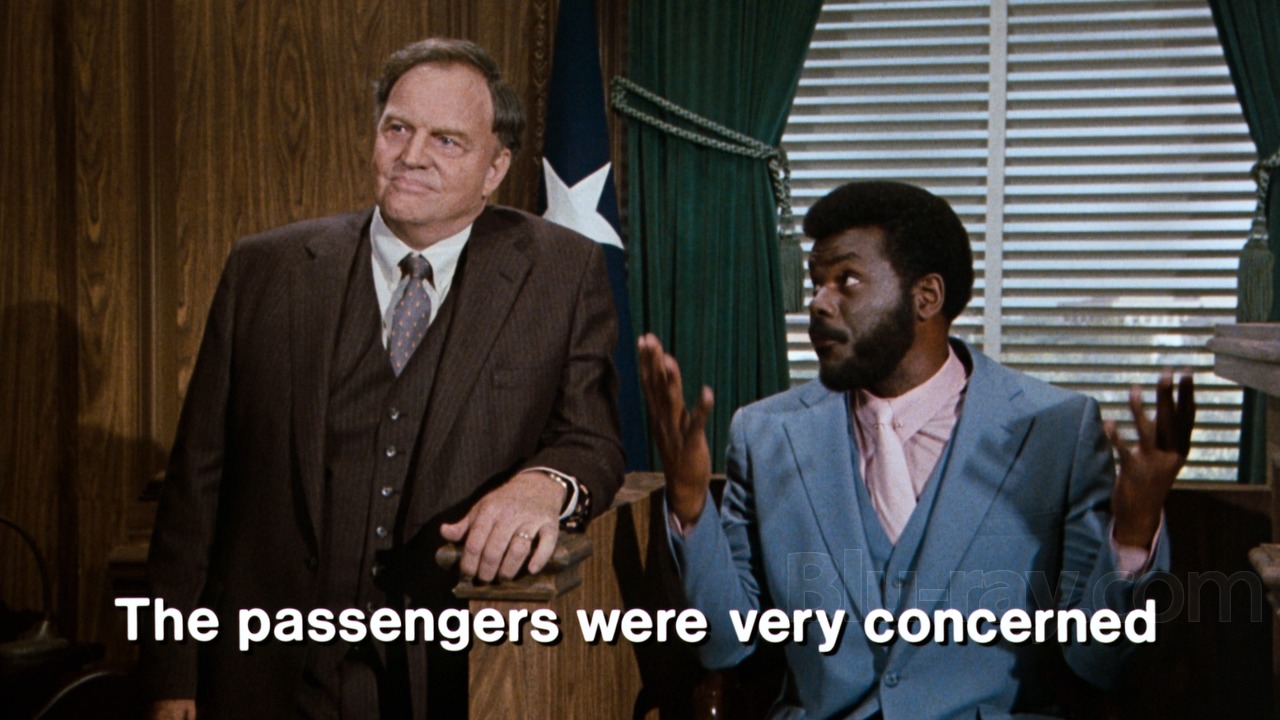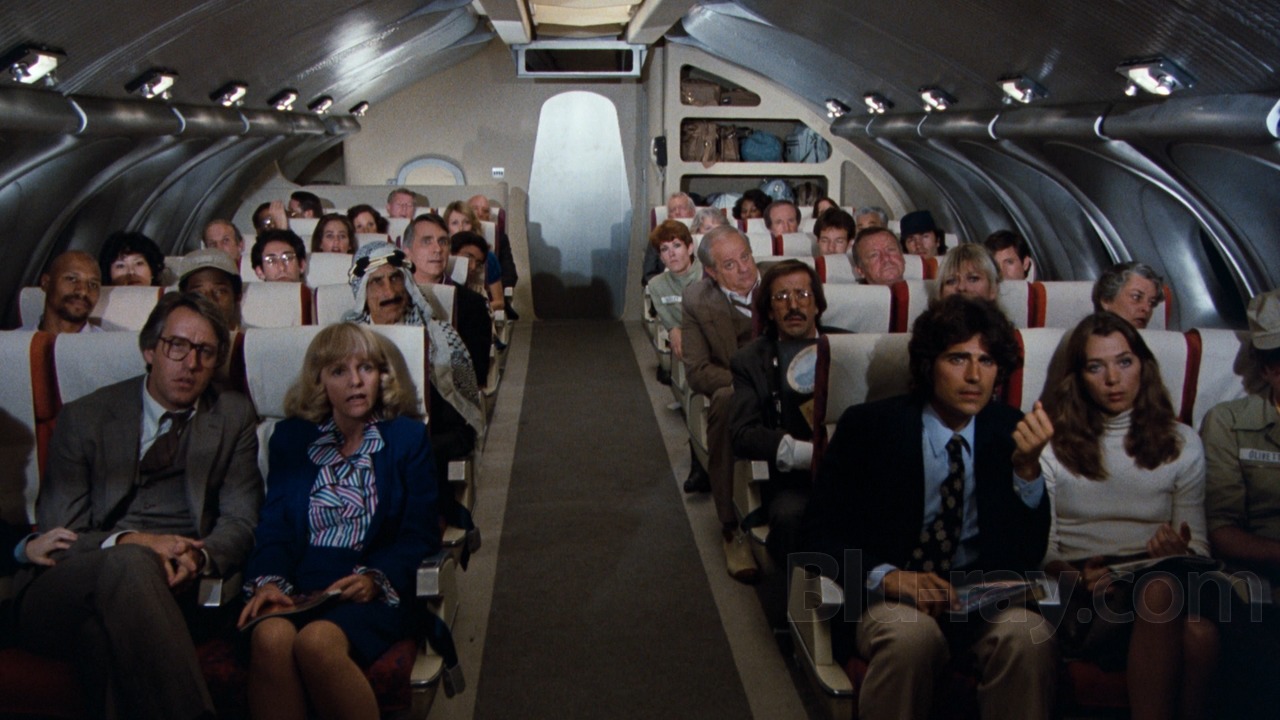
Flying High II (Airplane II), 1982
A couple of pieces made it into the Nine pages on Friday betraying just a touch of nervousness about immigration numbers. The articles, David Crowe’s ‘A startling number is about to trigger a toxic debate about big Australia’ and Liz Knight’s ‘Immigration a mixed blessing as housing shortfall looms’ carried the usual big Australia palaver implying racism as the backdrop to criticism of Big Australia, and critical skills shortages. But both pointed to the risks to a first term government if it can’t get immigration numbers back down, and if it can’t sell immigration to an increasingly sceptical electorate.
Crowe went to the nub of the matter with this…..
A startling number is about to add a toxic combination of fear and alarm to a national argument on migration that will help define federal politics after the Voice referendum – and may even shape the next election.
The number is 454,400, and it is deeply troubling news for Australia because it sums up the enormous strain on the country from a surge in migrants after the pandemic. The figure shows the net overseas migration over the 12 months to the end of March, after deducting the number of departures from those who arrived over that year.
It’s the highest level of net migration in Australia’s history, and it’s being taken as proof that Australia has “opened the floodgates” to migrants.
There is absolutely nothing there to disagree with. It is reshaping politics, the number is deeply troubling, and it is undeniable evidence that Australia has opened the floodgates to the Population Ponzi.
Crowe’s very next paragraph takes us back to the mantra which has run for a generation – Immigration discussion by the public is toxic.
But that old analogy is exactly the wrong way to look at this challenge when so much of the argument actually opens the floodgates on stale rhetoric, frightening conjecture and tired blame games.
That mantra relies on the assertion that a nation of migrants and the descendants of migrants isn’t capable of discussing immigration, and carries the implication that we should leave that discussion to someone else who can make decisions for us – that would be our elites politicians, bureaucrats, academics and business leaders, with special guests weighing into our media.
Liz Knight identifies where the same people making decisions in pretty much the same way, have made a complete mess of things – adding to the toxicity levels of an already disenchanted electorate.
One only needs to drive through the metropolitan suburbs and see snaking lines of people waiting to inspect rental accommodation to understand the flip side of higher migration – chronic housing shortage and tenants struggling to keep up with rising rents.
What is great for the economy is fast becoming an inequality nightmare.
Knight makes the observable point that immigration provides a sugar hit for the economy. She doesn’t touch on the possibility, which would be fairly obvious to most Macrobusiness readers, that Australia has been addicted to sugar for the best part of a generation now. A Thirty year average Net Overseas Migration of about 75000 per year in 2005, has become discussion about six and seven times that number annually in 2023.
She makes the point that housing for Australians is not only the obvious fracture point in Australia’s sugar addiction, but that it is turning into the diabetes of social inequality. Then having touched on another point obvious to Macrobusiness readers, she lets it all off the hook by opting to tout the upside of rising house prices for those – mainly older and more affluent – using them as cash dispensers, and a quick hat tip to the share prices of that large part of corporate Australia reliant on rising numbers of bums on seats in this country. Good for those with shares in superannuation funds maybe, but maybe not so good trying to decide between adding to super or paying next months rent or energy bill.
Crowe points the finger at a major culprit in Australia’s immigration debacle – the education sector.
That is because Australia has a “demand-driven” migration program that does not impose caps on the huge parts of the economy that rely on overseas arrivals – like the universities and other education providers who generated $26.6 billion in business last year. We have about 650,000 overseas students, as well as about 200,000 temporary graduates.
It is too late to break the nexus between education and migration in Australia because it has become essential to the business model at our universities, ever since Canberra told the academies to find new ways to make money without relying on taxpayers.
Education is now worth more than gold to the Australian economy – $26.6 billion against $23.5 billion last year – when the exports are counted in terms of goods and services as well as tuition fees. Yet the strain on the rest of the economy is impossible to ignore. It is visible to anyone who hops on a tram from Melbourne University, down Swanston Street and past RMIT University, or catches any other public transport around our biggest universities. The student populations are growing steadily bigger.
Have the universities grown too greedy? The truth is they gain the revenue from the uncapped migration system without bearing all the costs. They have no obligation to invest in housing, although the best of them are building more accommodation. They have no responsibility to pay for transport congestion. Is this sustainable?
There are a couple of nuggets within even that vein of truth
We have about 650,000 overseas students, as well as about 200,000 temporary graduates.
Think about that for a moment – that is more than the population of the Gold Coast (716k), or two servings of Canberra (457k).
One in 30 people in Australia currently are on one of these visas.
Then there is…
It is visible to anyone who hops on a tram from Melbourne University, down Swanston Street and past RMIT University, or catches any other public transport around our biggest universities.
Like, what is he advocating here? Australia not have a discussion about something he identifies is readily observable as part of the lived experience, not just in Melbourne, but in every Australian city?
He asserts that education earns Australia more than gold, but he doesn’t go within a bulls roar of identifying the costs of the education sector other than to point to the malaise and question how sustainable it is. The costs of Australia’s education sector’s reliance on overseas students is passed on to every aspiring student in Australia, and in that guise it makes those Australians funding their education with their earnings or their parents earnings in Australia ‘compete’ with the earnings of others offshore.
Crowe sure as hell doesn’t go near asking the fundamental question – Is having an education sector in Australia firstly about providing educations, particularly tertiary and vocational educations, for existing Australians, or is it about selling Australian citizenship as an add on to undertaking study here?
A lot of ordinary everyday Australian families with children would have something riding on the answer to that question.
And those ordinary everyday Australians are the very people both the ALP government and the discredited LNP opposition, as well as the Greens and the Clive Palmer nutters, will be relying on vote for them in less than 18 months at the next Federal election.
Earlier on Crowe notes that the importance of this issue at the end of September 2023 is that there will be a few announcements about immigration where our 18 months old government would rather the electorate didn’t look at the outcomes they are already experiencing, and would rather they focussed on a hope that immigration numbers may fall.
The galvanising event in this debate will be the migration strategy that is due for release in the next few weeks and is meant to overhaul the country’s visa system to make it simpler and faster to bring in the skilled workers Australia needs.
One part of the strategy is already in the news: a new visa class is meant to make it easier for employers to get the clearance they need to attract foreign workers who will earn much more than the average salary.
This is only one part of the plan, however, and it is not a move to expand the overall program because the government’s objective is to bring net overseas migration down from that 454,400 number. This is an absolute imperative in the new strategy.
He is right that the scene is now shaping as rising housing costs versus the population increase is likely to be a very influential dynamic over the next 18 months.
The tragedy for Australia, and the immigrants we are bringing in, is that we are being played as patsies, by an elite which doesnt want to square up with what is unfolding, and doesnt want to level with people it is expecting to vote for them.
Something to keep an eye on as the drama plays out.
